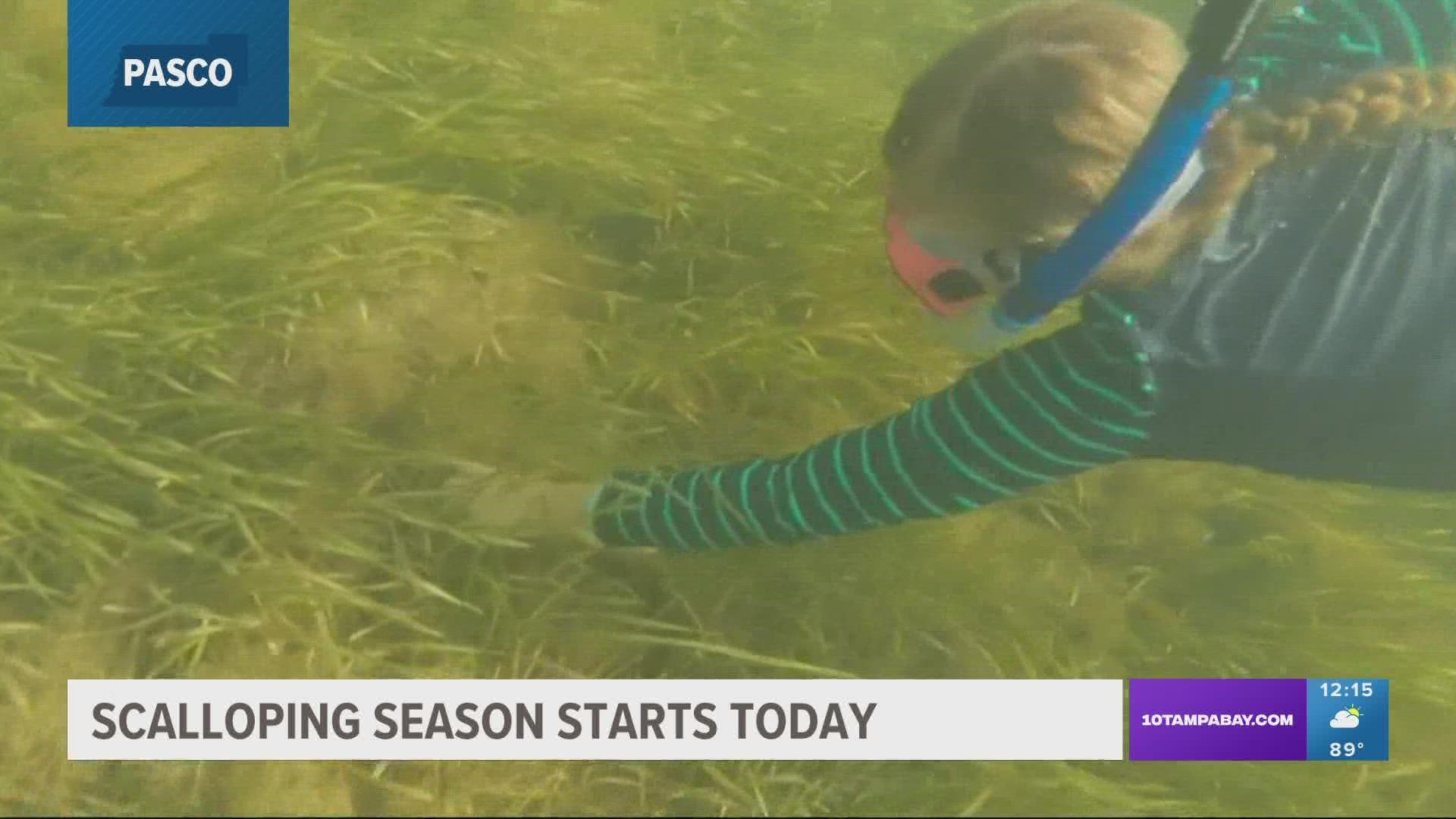PASCO COUNTY, Fla. — The first day of Pasco County's 10-day scallop season was a "wait and see game" for Captain Wendy Longman of Windsong Charters.
The usual abundance report produced by the Florida Fish and Wildlife Conservation Commission hadn't come this year.
"Apparently they're only doing abundance reports postseason, which doesn't really help me much," Longman joked.
However, she had heard various chatter about the numbers of scallops in the Tampa Bay area. U.S. Coast Guard captains said numbers were really good. Avid "scallopers" and fishermen reported that they weren't seeing as much.
Mere hours into the season on Friday, all she could do was wait and see and hope for the same success she had in Pasco's northern waters last year.
However, the waters in Pinellas County were a different story.
In July 2021, the Tampa Bay area saw its worst levels of red tide in 50 years. In Florida, the species that causes most red tides is Karenia brevis. It kills fish, smells stinky and can even cause respiratory irritation for those with respiratory illness.
Pinellas County alone spent $3 million cleaning up $1,836 tons of debris.
While Pasco County had low levels near shore, Longman said, Windsong's charters had to reroute and avoid waters in Pinellas County that saw high levels of red tide, meaning low levels of scallops.
However, the northern part of Pasco had a fantastic scalloping season, she said.
"There's absolutely no indication of red tide this year," Longman said. "So I am suspecting that the numbers throughout the county waters... are going to be favorable."
Jennifer Granneman, an associate research scientist at FWC's Florida Fish and Wildlife Research Institute, said the FWC doesn't have an estimate of the scallop population this year because the survey is being conducted at a different time than in previous years.
The Florida Bay scallop are an annual species, meaning it lives for about 12 to 18 months, Granneman said. They reproduce in the fall and typically die afterward. So the population survey will now be conducted in the fall to provide a better estimate of the number of scallops available to spawn and contribute to the population.
Red tide blooms can cause complete mortality of juvenile and adult scallops as well as reduced feeding rates of the scallops, she said.
The lack of red tide is a good indicator that there may be more scallops, she said, but there are more environmental factors that can have a strong effect on scallop abundance, as well.
One factor is a lot of rainfall, which can increase turbidity, or suspended sediment, in the water as well as temperature and dissolved oxygen levels, Granneman said.
"All have the possibility of affecting bay scallop abundance," she said. "So you have to look at all the factors as a whole and not just one factor in isolation."
However, at this time there are no significant concerns about the scallop population currently, Granneman said.
Luckily, Longman didn't have to wait long for feedback on scallop abundance. In the early afternoon, Friday fishing charter captains, from the 20 boats that were out, started sending in reports to her.
The scallops are out there!
"They said it's been the best scalloping they've seen on the first day in a few years," Longman said.
While she didn't share where the holy grail of scallops is, she reported that they're absolutely out there, and two of her captains were already enjoying their fresh catches at a waterfront restaurant.
The Pasco County season runs until July 24. The daily bag limit per person is 2 gallons of whole bay scallops in shell or 1 pint of bay scallop meat. The limit per vessel is a max of 10 gallons of whole bay scallops in shell or 1/2 gallon bay scallop meat.
Granneman said people should throw back scallops that are under one-and-a-half inches.
"This isn't regulation by FWC, but it's just a scalloping best practice that we're trying to encourage," she said.
She also said scallopers this season might run into volunteers connected with Sea Grant and FWRI distributing devices called scallop sorters. They are small pieces of plastic with a hole. If the scallop can fit through the hole, that indicates that it should be thrown back.
Throwing back smaller scallops gives them a chance to respawn and contribute to the next year's population.

